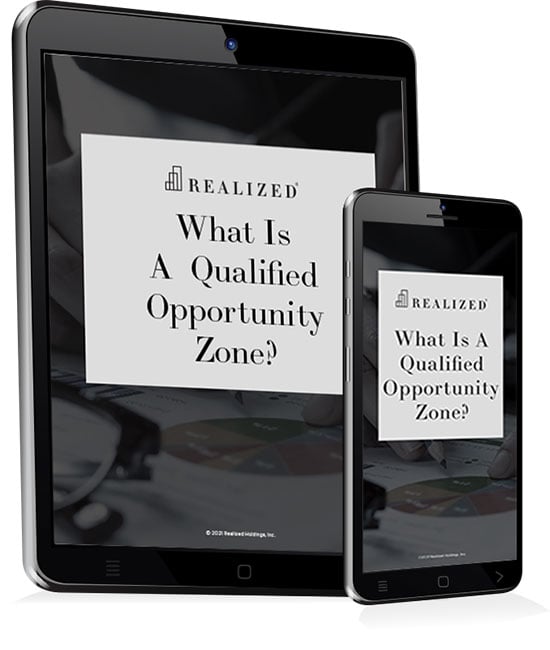Potential to Build Wealth, While Doing Good
The Tax Cuts and Jobs Act was signed into law in December 2017 amid some heated controversy. However, what quietly slipped under the radar within the Act is a new tax incentive called Qualified Opportunity Zones (QOZs).
Through the Qualified Opportunity Zones program, the federal government is certifying distressed low-income communities throughout the United States as Qualified Opportunity Zones (QOZ). These zones will be eligible for federal tax incentives which could offer a new way to defer taxes on reinvested capital gains and potentially avoid capital gains all-together on the appreciation of the Qualified Opportunity Zone Property. This program not only offers a new tax advantage for investors, it also an incredible vehicle to funnel much needed resources to distressed communities across America.Why Become a QOZ Investor
Although still very new, the Qualified Opportunity Zones Program has an extremely exciting outlook for investors. Here is what investors should know:
- The program allows people to re-invest realized capital gains from the sale of their real estate or other assets into a Qualified Opportunity Fund, which will attempt to go towards the betterment of low-income communities.
- Investing realized gains into Qualified Opportunity Funds (QOFs) provides individuals with an opportunity to defer capital gains taxes and qualify for a step-up in basis by 10%, as long as they hang on to the QOF investment for at least five years. The basis in their original asset could increase by an additional 5% if they hold the QOF investment for at least seven years, meaning the investor could exclude up to 15% of their original realized gain from taxation.
- If an investor holds the QOF investment for at least 10 years, they could be eligible for a permanent exclusion from having the gains on their QOF investment taxed when they sell their QOF investment.
- The program can be combined with other tax credit and tax deferral programs such as New Market Tax Credits and 1031 Exchanges.
How Qualified Opportunity Zones Can Help Improve America’s Communities
In 2015, Jared Bernstein with the Center on Budget and Policy Priorities joined forces with the American Enterprise Institute’s Kevin Hassett to release: “Unlocking Private Capital to Facilitate Economic Growth in Distressed Areas.” The report is available through the Economic Innovation Group, and points out that:
- While the nation is recovering from the Great Recession, many cities/regions are still experiencing high rates of joblessness and unemployment.
- Extremely high unemployment can lead to “pockets of distressed and traumatized workers who face plummeting incomes, stalling career progressions and cracking self-confidence”.
- In economically disadvantaged regions, death, suicide and illness rates increase following job losses.
While the federal government has tried many times to establish programs to benefit disadvantaged communities, for example Empowerment Zones and New Market Tax Credits, these programs have proven to be cumbersome to implement and have led to mixed results. “Existing tax structures are already complex,” Bernstein and Hassett observed, adding that weak investor incentives, combined with underutilization, have meant lackluster results. The authors’ suggestion was to:
- Target private sector investment for community betterment, and
- Do so using “force multipliers” of third-party frameworks, such as those available through banks, venture capital firms or mutual funds
For example, a mutual fund could specialize in development investments within distressed communities. Meaning, that fund would raise and oversee the money – as opposed to the federal government – which means red tape and bureaucracy could be reduced. In the meantime, the government would create attractive tax incentives so those funds could lure private-sector investors.
Potential Results of Qualified Opportunity Zones
Rather than the one-size-fits-all programs previously relied on for troubled communities, the idea behind the Qualified Opportunity Zone Program is that funds and investments can be developed to serve a particular community need. So while one fund could focus on affordable housing, another might target job training and education. Meanwhile, reinvesting capital gains into such funds will have the goal of enabling investors to take advantage of powerful tax deferral and potential tax reduction opportunities.
Noted Lori Chatman, with the Enterprise Community Loan Fund: “The Opportunity Zone Program optimizes flexibility, allowing different types of investments that could benefit multiple parts of the community development ecosystem.” The ECLF is one of the largest Treasury-certified Community Development Financial institutions to invest in low-income communities.
The Government Continues to Release New Critical Info Regarding QOZs
The Opportunity Zone Program is still very new and the federal government and Department of the Treasury are still working on parameters for Qualified Opportunity Funds. As the program gets underway, the government will continue issuing important investment information. We encourage investors to subscribe to our blogs and other content pertaining to the Opportunity Zone Program so they can receive the latest tools and information to assist them with their portfolio decisions.




